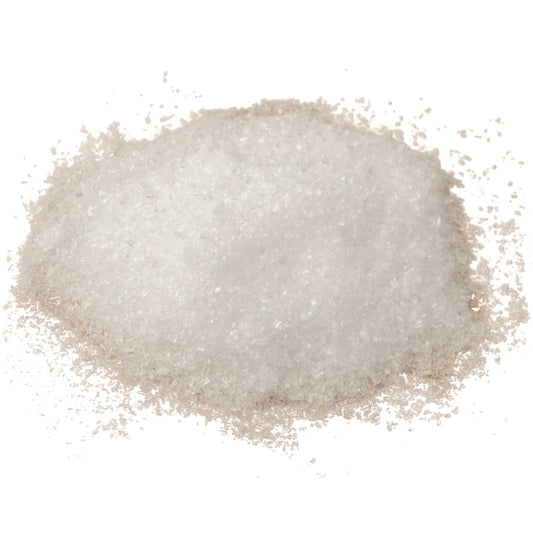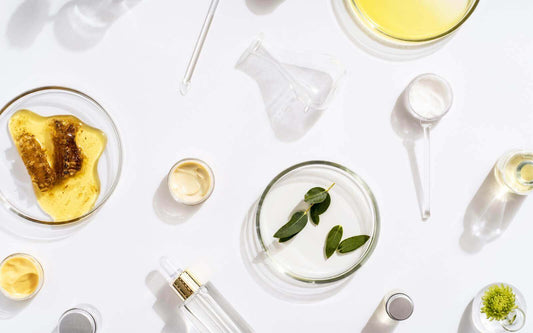
Formulating Hacks: 14 Tips We Wish We’d Known When Starting Out
Juliette van der MeerIn hindsight, when we started formulating over 6 years ago, there were definitely some things we wish we'd known at the time. But we made lots of mistakes and learnt from them, and now we can share a handful of hacks that really helped us - to make your life a little easier!
Our Top 14 Cosmetic Formulation Hacks:
1. Grinding/grating hard solids for easier melting
Certain solid ingredients are very hard, which makes them difficult to work with. Melting chunks of raw cocoa butter or flakes of SCI can take ages, but we found that if you grate them or grind them to powders they are much easier to work with.
Grate your cocoa butter using the fine side of your grater and powder your SCI by putting it in a Ziplock bag and bashing it with a meat tenderiser tool (or you can use a coffee grinder but then please don't use it for coffee!).
2. Flash cooling in the fridge or freezer; or using an ice bath
Sometimes you will need to quickly cool down a mixture, particularly in cases of a just-melted anhydrous product such as a butter or balm. Often if you leave it to cool at room temperature, the oils/butters in the mixture will cool at different rates, which can create a grainy texture.
Flash cooling when you have small batches can help achieve a smoother texture. If you have larger batches, it is better to use an ice bath and stir your mixture until it is cool. This will ensure an even rate of cooling and then no grains can form.
3. Drying out bath salts and bath bomb ingredients in the oven so they don't attract moisture
As some of us will have inevitably discovered over time, bath salts and bath bomb ingredients are really sensitive to moisture and humidity. Ensure your mixture is moisture free by spreading it on a baking sheet and popping in a warm oven for a few minutes to evaporate any moisture. Make sure your packaging is dry and moisture-free as well.
4. Don't make huge batches of a new product
We all get excited by a new recipe or product. But reel in your urge to make a large batch of something you have never made before, because sometimes it may not work out quite the way you thought! I have made larger batches of products only to find that I didn't quite like them and wanted to make changes. But it's hard to make changes to a fully made product so I had to start over..
Make small batches of 50-100g so you can see how your formulation performs first, and if you need to make any changes. There's less ingredient wastage that way, plus you have more control over your product.
5. Always write down your formula and notes when experimenting!
I really can't stress this enough. While playing around and experimenting with ideas, I've actually made some pretty amazing products, but when I wanted to make fresh batches I discovered to my horror that I had forgotten to write down the formula at the time and now I couldn't remember what I did. It's a rather sad situation to be in so always write down what you are doing!
6. Use spreadsheets/Google sheets, Google docs, or other digital tools
I really recommend having a digital version of your notes and formulas. Paper notes are great but they tend to get spilled on, messed up or lost; so having the digitised form is a handy tool. I love using Google Sheets and Google Docs to write down formulations and notes, and they are easy to use and edit.
7. Research your ingredients by INCI name
Need to find more info on an ingredient? Don't Google or search it by it's common name, use the INCI name. We have listed the INCI names of all our ingredients on their product pages so you can simply copy and paste that into your search engine.
8. Add stearic acid to butters to prevent them melting in hot weather
Butters and balms seem simple but can actually be quite technical to get right. They can melt in hot summers and go rock hard in cold winters, so finding that balance is really important. We found that adding a little stearic acid to the mix can really help stabilise butters. Give it a try!
9. Replace glycerine with propanediol for a less sticky product finish
Vegetable glycerine is a brilliant humectant and cosmetic medium, but it tends to make products feel a bit sticky when used at more than 5%, which means you are slightly limited with how much you can incorporate into your products. Try replacing it with propanediol, which is a similar natural humectant, but it doesn't have the same stickiness factor.
10. If you can't deal with the scent of raw butters (eg. shea butter), use the refined version
Let's face it, we all love a good butter but the scent of raw shea butter isn't for everyone! Even raw cocoa butter can get a little overwhelming. And sometimes you want to include the butter but you don't want the smell associated with it. The solution is to use the refined versions of these butters; they still retain most of the benefits but have been refined to get rid of the offending scent.
11. Use arrowroot powder to help reduce greasiness in oil-based/anhydrous products
Made a body butter but finding it a bit greasy? This is determined to a large degree by the types of oils and butters used, but you can reduce greasiness quite a lot by including arrowroot powder, which helps soak up oils and mattify the skin.
12. Work in batches of 100g
Working in batches of 100g (or multiples of 100g even) makes converting from percentages into grams so easy! If you use 100g batch sizes, converting % into grams is simply a 1:1 conversion. 100% = 100g.
Life is hard enough, don't complicate it more with difficult maths conversions...
13. Don't skimp on a scale, beakers or spatulas
When I first started out, I was using teaspoons, tablespoons, cups and saucers, mixing bowls and various other things from my kitchen. Please don't be like me; make your formulating journey a breeze by investing in a jewellery scale (you can get it from Takealot), beakers and spatulas utensils. I can't emphasise enough how much of a difference these simple tools have made.
14. Double, triple or quadruple your cotton swabs to make a filter
If you need to filter or strain infusions, liquids or extracts but don't know what the heck to use, fear not, cotton swabs to the rescue! Get a funnel and a few swabs and double, triple or quadruple layer them to make the best filtering mechanism.
We hope these formulating hacks help you as much as they helped us!









4 comments
Hi Karli, unless you live in a very humid area there isn’t a need to put them in the oven. However if you need to really dry things out before packaging, or humidity in the air is affecting your products then you can put them in the oven to evaporate any moisture.
When making bath salts and bombs, would you put the final product in the oven (i.e bath salts mixed with safflower oil, bicarbonate sodium & essential oils)?
It’s a pleasure Janine! Happy making :)
Thank you for these! I’m attempting body butters soon and love the advice.